Back in 2019, Mark Russell discussed his VFX work on Triple Frontier. Following that, he contributed to the visual effects for Motherless Brooklyn, In The Heights, and The Time Traveler’s Wife.
How did you get involved on this movie?
The producers for The Instigators called me and really pushed for me to do the film. I had been dancing around some of Doug Liman’s past projects, but the timing had never quite worked out. I had also recently come off of a not-so-great experience, so I was being very careful about my choices. I saw this project and looked carefully at all of the really talented people involved and decided it would be fast and fun.
How was the collaboration with Director Doug Liman?
Working with Doug is a uniquely interesting a enjoyable experience. He’s really really smart and has an innate understanding of what makes things exciting in film. He is very spontaneous, which can sometimes be a bit challenging for VFX, but he’s really wonderful to collaborate with and very appreciative.
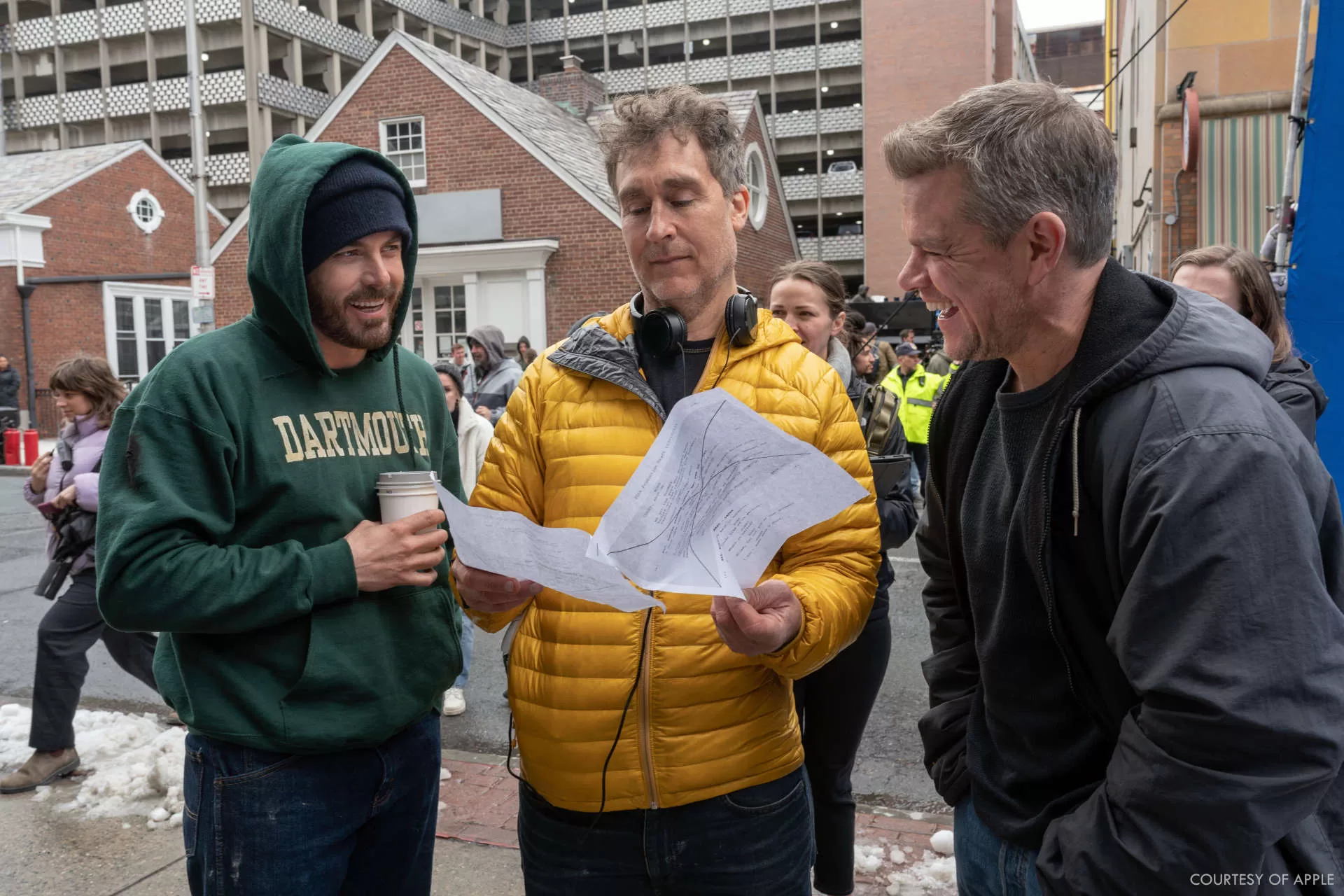
How did you organize the work with your VFX Producer?
The VFX producer Sophie-Ann Price and I had worked together previously, so we already had a bit of a shorthand which was really helpful when we realized that this would be a job where too much planning would just get in the way. She and I broke down the script and the work into manageable buckets and did our best to find the best vendors for each of the different aspects of the work.
How did you choose the various vendors and split the work amongst them?
We each had a list of companies that we had positive experiences with, and as we bid the scope of the show to a number of them, we crafted a plan that would utilize the strengths of each vendor while keeping the budget where it needed to be. Being a show that takes place in Boston, MA, we really wanted to find a good piece of work for Zero VFX who is based there. We were also very keen to do a portion of the work in NY where we would be shooting the rest of the film and posting, so we hired Phosphene, The Mill NY, and Assembly. And then we had an additional vendor (Twin Pines) in Spain who I have a great relationship with to do all of the shots that fit between the other companies.
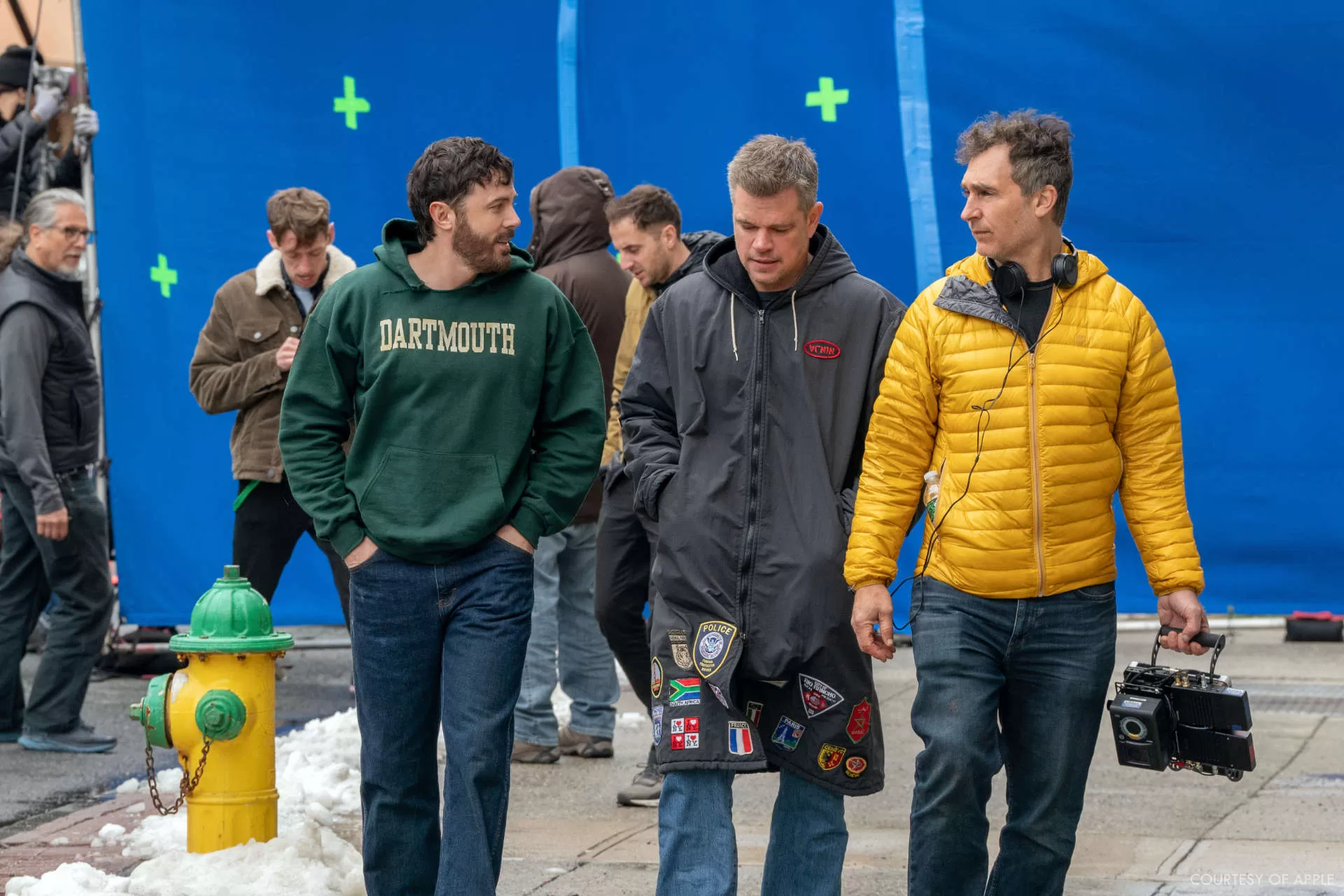
What is your role on set and how do you work with other departments?
The way I view my role on set for a project like this is multifaceted. First and foremost, my job is to project the director’s voice and vision into the world of VFX. Second, I will design and execute the complicated elements of all the visual effects in a way that is both creatively in line with the director’s vision and financially smart. Finally, I’m the yes man. We can solve problems that come up along the way for other departments in service of the film.
Can you describe the process of creating invisible visual effects for “The Instigators”?
A good part of our prep involved identifying the things that were most important to Doug, and then as a production team we would create plan for how to achieve these goals. As an example of this, the set piece that comes to mind is the end of the armored truck chase. Rory and Cobby have just fled the crime scene in a stolen vehicle and they stop in a parking lot for a 7 page dialogue scene. Doug really wanted this entire scene to be at pre-dawn where there was light in the sky, but the sun hadn’t yet risen. As we scouted location and looked for way to do this in camera, it became obvious that this was an opportunity to show Boston to the viewers. The challenge is that it’s not easy to shoot such a long scene at magic hour. Once we found an interesting location for the scene, we decided to shot the establishing shots and the wides (1 take only) in the real location and the rest of the scene would be shot on a sound stage with blue screen. Adding to the complication, Henry Braham (our director of photography) really didn’t want to over-light the scene to compensate for the blue screen. We ended up using a sky blue backing instead of traditional chroma blue so that the ambient light from the screen was lighting the actors. It all worked nicely in the end, and I think the results are seamless.
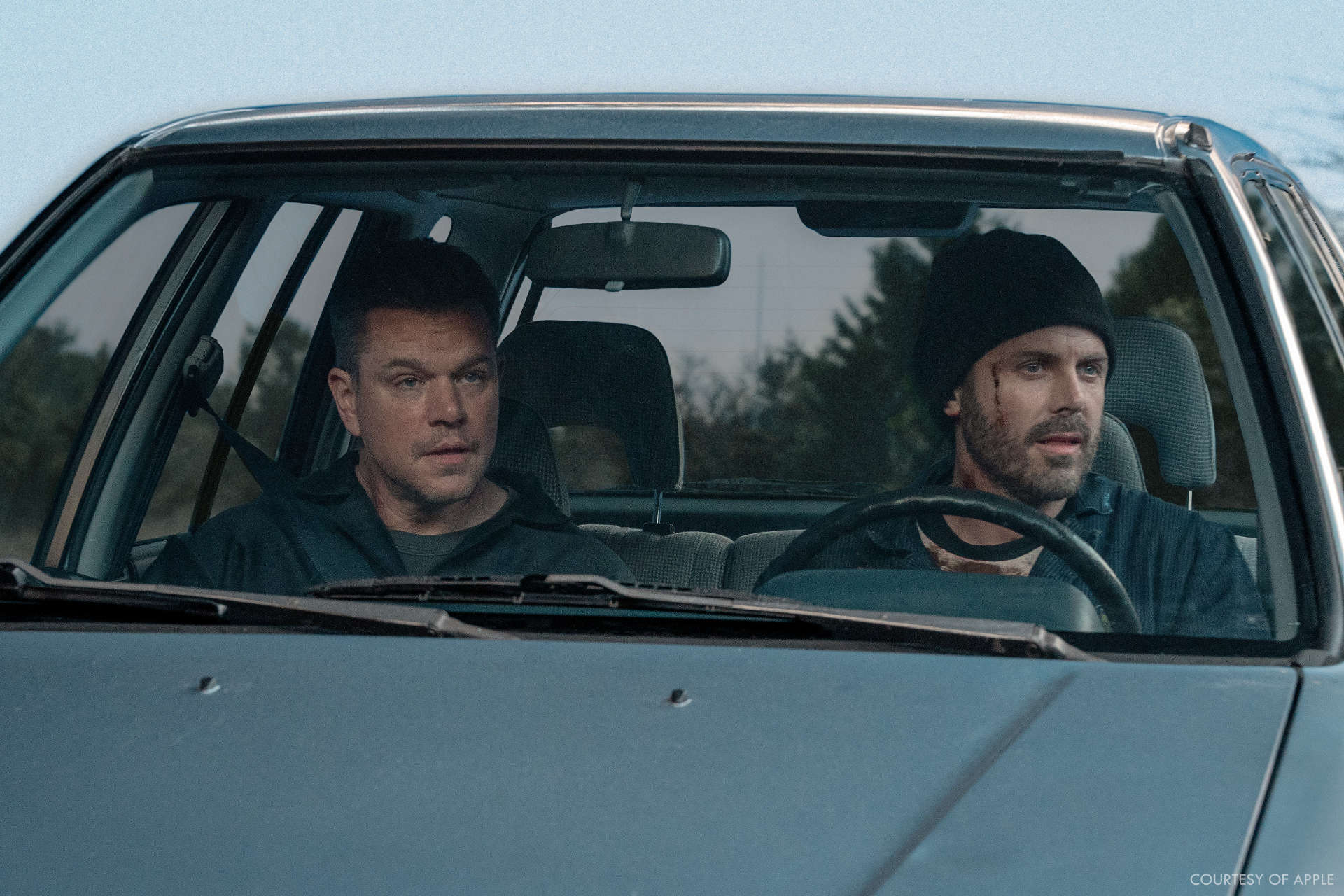
How did you approach the car chase scene in terms of visual effects?
The car chase was identified early on as one of our more ambitious scenes in the film. All of the interior shots with our principle actors would be shot on stage with blue screens and a large portion of it was to be shot by a second unit in a very limited time window. To that end, we were really able to plan the shots well. I worked with Doug and Simon Crane, our Second Unit director, to devise a plan to get plates for all of the blue screen driving shots simultaneously to the stunt unit shooting the action. We placed four cameras with really wide lenses inside the hero stunt vehicles during all the takes, so we were able to eliminate the need to do additional passes for VFX plates. The plates required a little bit of clean up on some shots, but it was really effective.
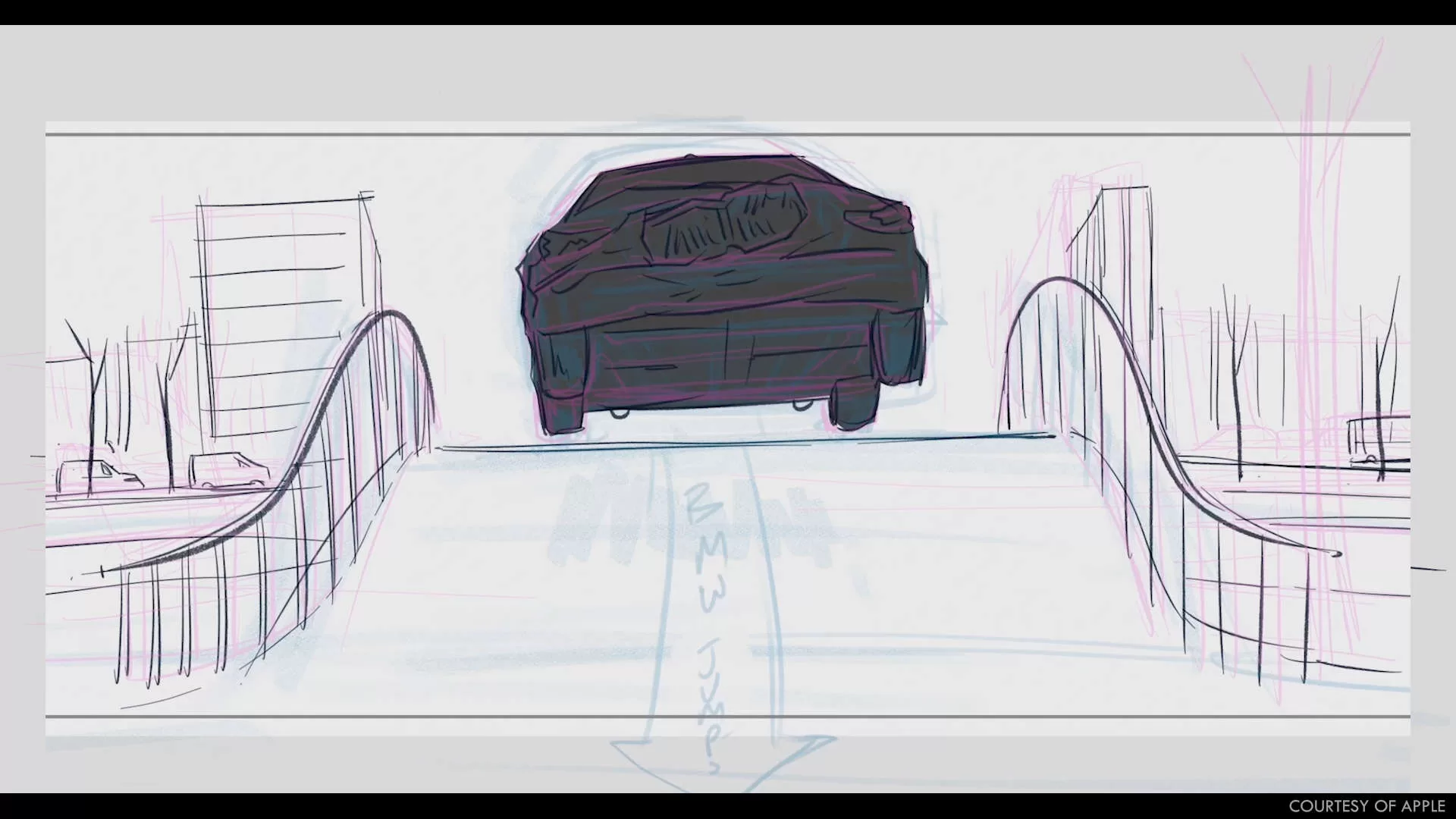
How do you ensure the visual effects remain seamless and undetectable to the audience?
I rely on a lot of really talented artists to find the right balance during compositing in order to make sure everything works as it was planned. It was also very important to me to make sure that the background plates were shot with similar sensors to the foreground elements. We were shooting the show with Red Monstros and the majority of the plates were shot with Red Raptors which help with the integration. This is also an area where Doug is really helpful. If something isn’t working as planned, Doug will work to find a solution using the material we have.
Can you give an example of an invisible visual effect used during the car chase scene?
We added a number of police cars during the car chase to amp up the danger and the intensity of the shots. Without giving any of those shots away, it really helped up the stakes for the characters.
What role did pre-visualization play in planning the visual effects for the chase?
I hired a small team from The Brigade in NY to do a scrappy pre-vis using a combination of animated 2D storyboards and some 3D animation to really help refine the sequence. At the end of the day, we had to make a lot of adjustments along the way to how the scene would play out due to limitations in filming locations. It was a dynamic process and having a guide to keep the sequence together was really helpful.
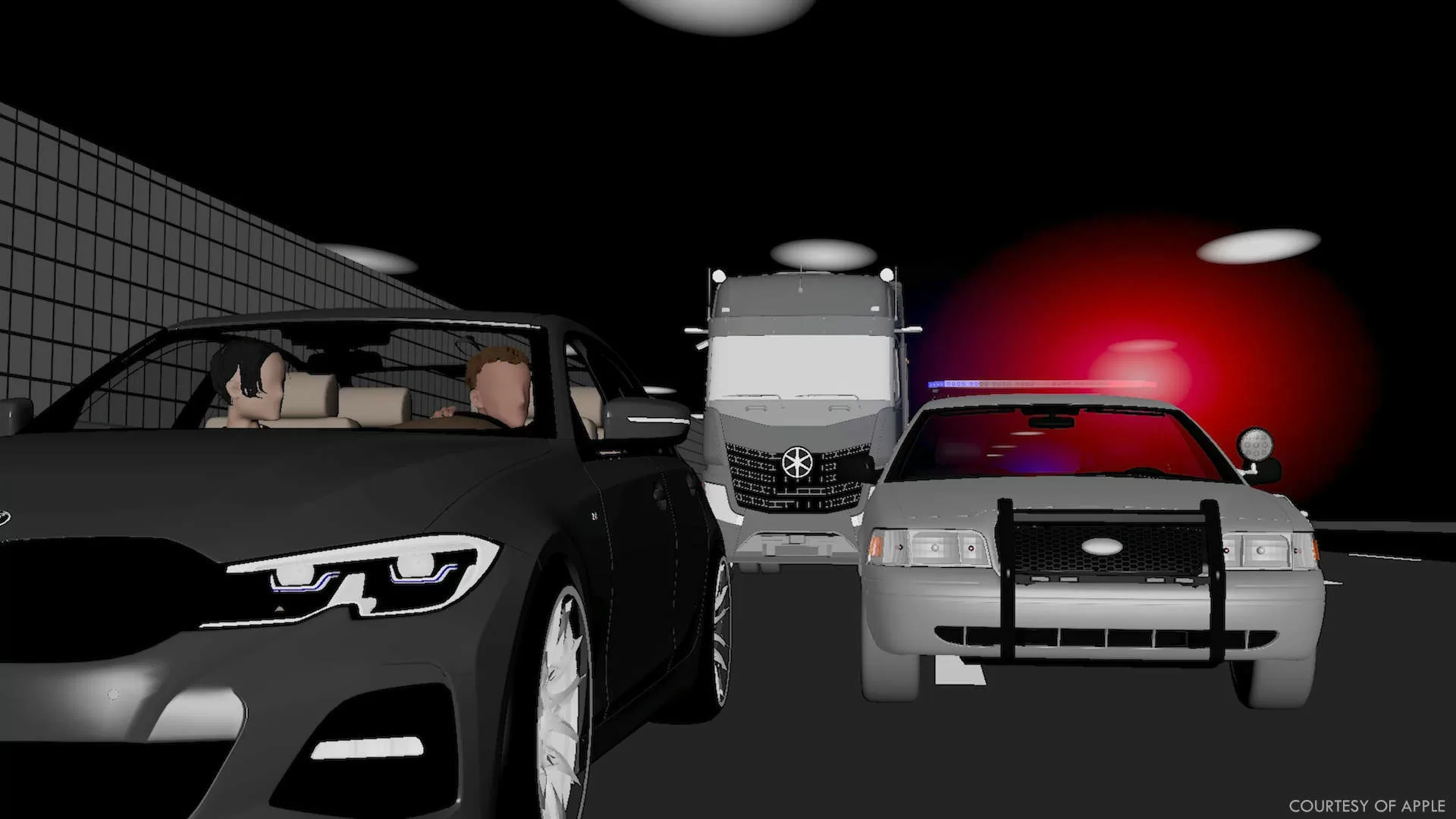
How did you balance practical effects with CGI to enhance the realism of the car chase?
I always try to do things in camera whenever possible. When we are unable to do things in camera for whatever reason – logistics, time, safety – that is when we turn to VFX. We actually had some dumb luck for the end of the car chase. The shots where the car hauler rear-ends the BMW were actually from a take where the truck didn’t stop on it’s mark. It was not meant to hit the BMW, but it was such an exciting moment that we kept it in the sequence and enhanced the flying glass.
How did you handle the compositing of various elements during the high-speed chase scenes?
On the set we played bg plates from the real locations on LED screens just above the blue screens so the actors were lit by interactive light that came from the plate unit. Henry and his team built a large blue screen box surrounded by LED panels large enough to fit a bus. This went a long way to help with the integration. These scenes were done by both ZeroFX and Twin Pines who both did a really great job at integrating the blue screen shots with the BG elements.
Were there any sequences in the car chases that required complete digital environments? If so, how were they created?
We thought there would be a few moments where we would need to recreate an environment or two to fill in the gaps of our plate coverage, but at the end of the day we were able to use 2D photography for all of the elements in the car chase. There are a few shots where we needed to Frankenstein a few things together to make it work. However, I did photoscan the entire route of each of the chases (with the help of Mosiac51) in case we needed to recreate any of the locations in CG. We were able to use many of the photographs from this process to patch holes that we had in our plates.
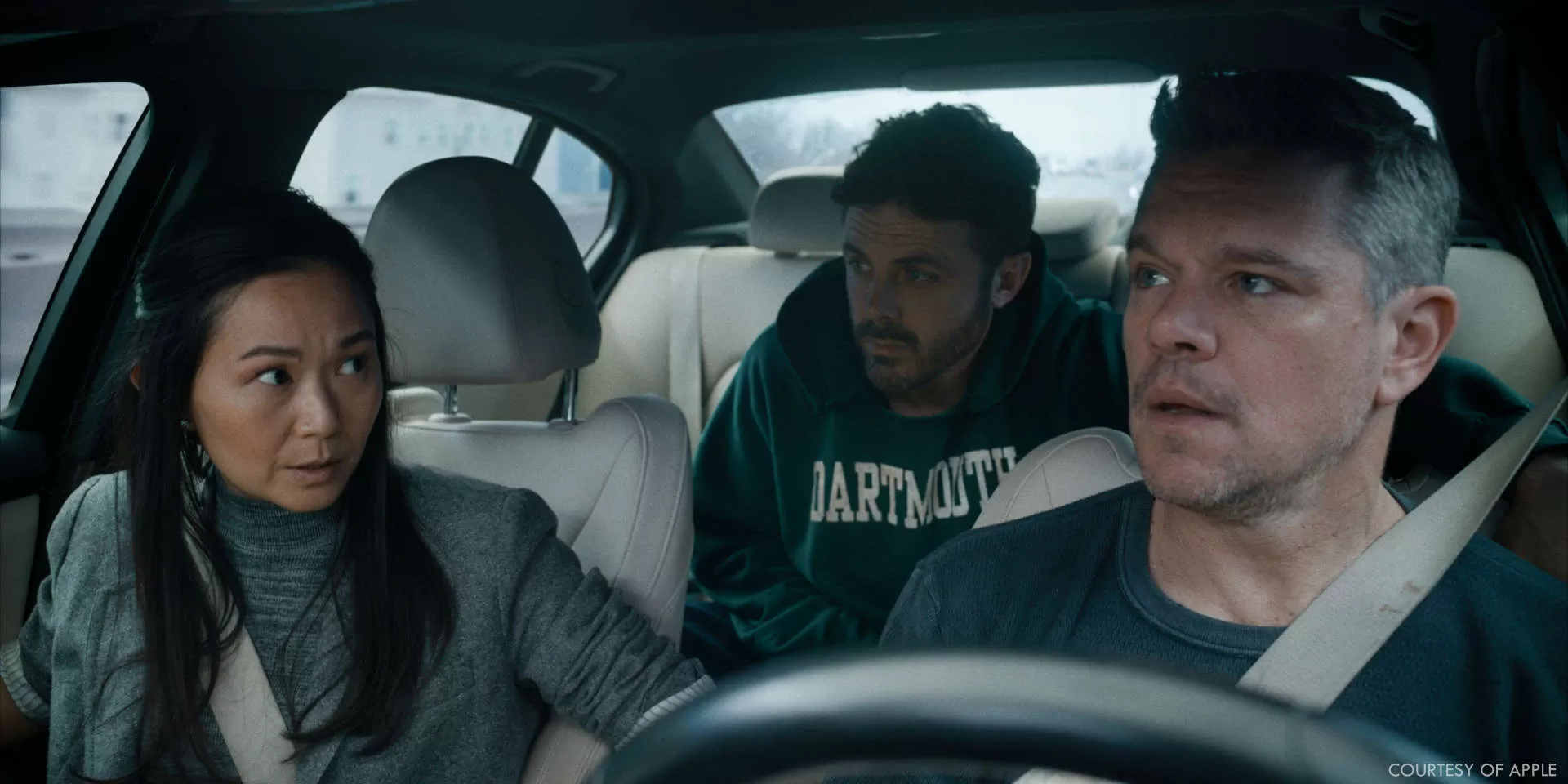
How important was the collaboration with the stunt team in achieving the desired visual effects for the car chase?
It was essential. Without the support of the stunt unit and the entire 2nd unit team we would have had a much harder time in putting all of these pieces together. One of the biggest challenges in a movie that takes place in such specific locations is that the access to those locations is so limited. By embedding the plate camera into the hero stunt vehicles, we were able to put all of our limited time toward getting shots and not capturing plates.
What specific challenges did you face while integrating visual effects into the real environments of Boston?
Another of our big challenges relates to the climax of the film taking place inside Boston’s famed City Hall which is a very distinctive brutalist style building. Rory and Cobby sneak into the mayor’s office disguised as firemen by setting a fire in the bowels of the building. This fire causes the sprinkler system to go off inside the building. Clearly the city of Boston was not about to let us set of the sprinklers inside the building for our shoot, so VFX was asked to add interactive water to all of the shots of our heroes entering the building and approaching the mayor’s office ( which we had built as a set). I knew from the start that this was a critical sequence in terms of believability for the film, so I brought in a team from The Mill NY whom I have worked with many times. They were able to create interactive water simulations based on a comprehensive interior lidar scan of city hall and CG models of our actors. We did what we were able to do on the day as far as getting the actors a little bit wet, but the majority of the water in this scene is digital.
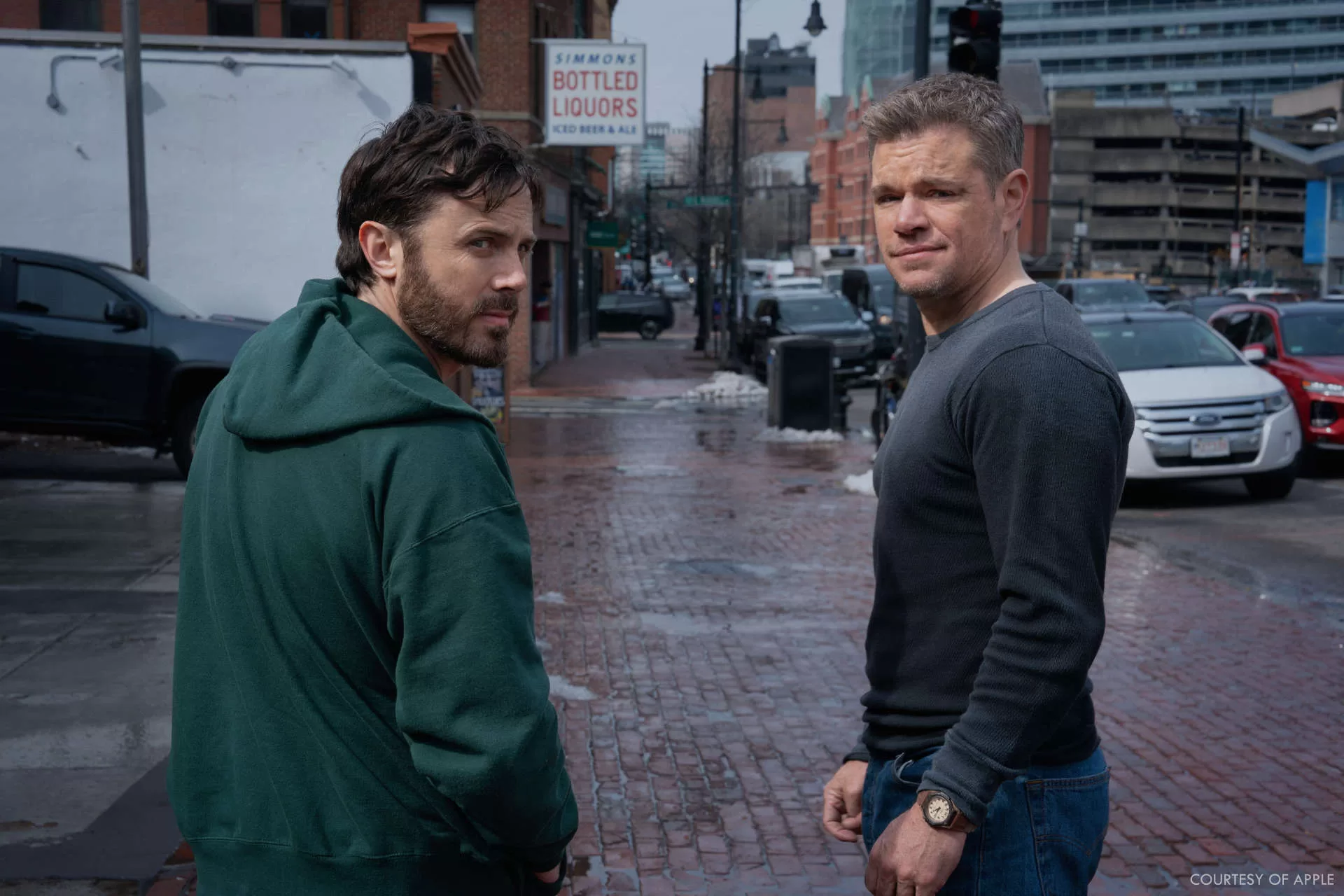
Can you discuss any instances where visual effects were used to modify or enhance the Boston skyline?
We wanted to have a few big wide shots of the Wharf restaurant in the film that showed downtown Boston in the background, especially when the heist is being planned and idealized. Here, Twin Pines took some fairly low-quality drone footage drone and rebuild the wharf in CG so we could re-animate the camera however we wanted. We didn’t change anything in the skyline, but we did create the Wharf restaurant.
How did you ensure continuity and consistency in the visual effects throughout the different scenes in Boston?
We worked very closely with the DP and Company3 to make sure that all of the shots had a continuity throughout the film. The chase, for example, was shot over 5 or 6 days sometimes sunny and sometimes raining and other times cloudy. Somewhere between editorial, vfx and final color we ended up with something that feels natural.
Were there any specific scenes or shots that required extensive digital clean-up or enhancement?
The bulk of the film was shot in the late spring, but it takes place in the winter. We had a great SPFX team that spread shaved ice out on many of locations, but there were a number of scenes where that wasn’t possible or it didn’t cover enough of the set and VFX had to step in and add snow or remove leaves on the trees. Ironically, when we came back for some additional photography in the winter, we weren’t able to have the snow crew, so we ended up adding more snow in the winter scenes than in the springtime scenes, but we were able to keep the trees as they were.
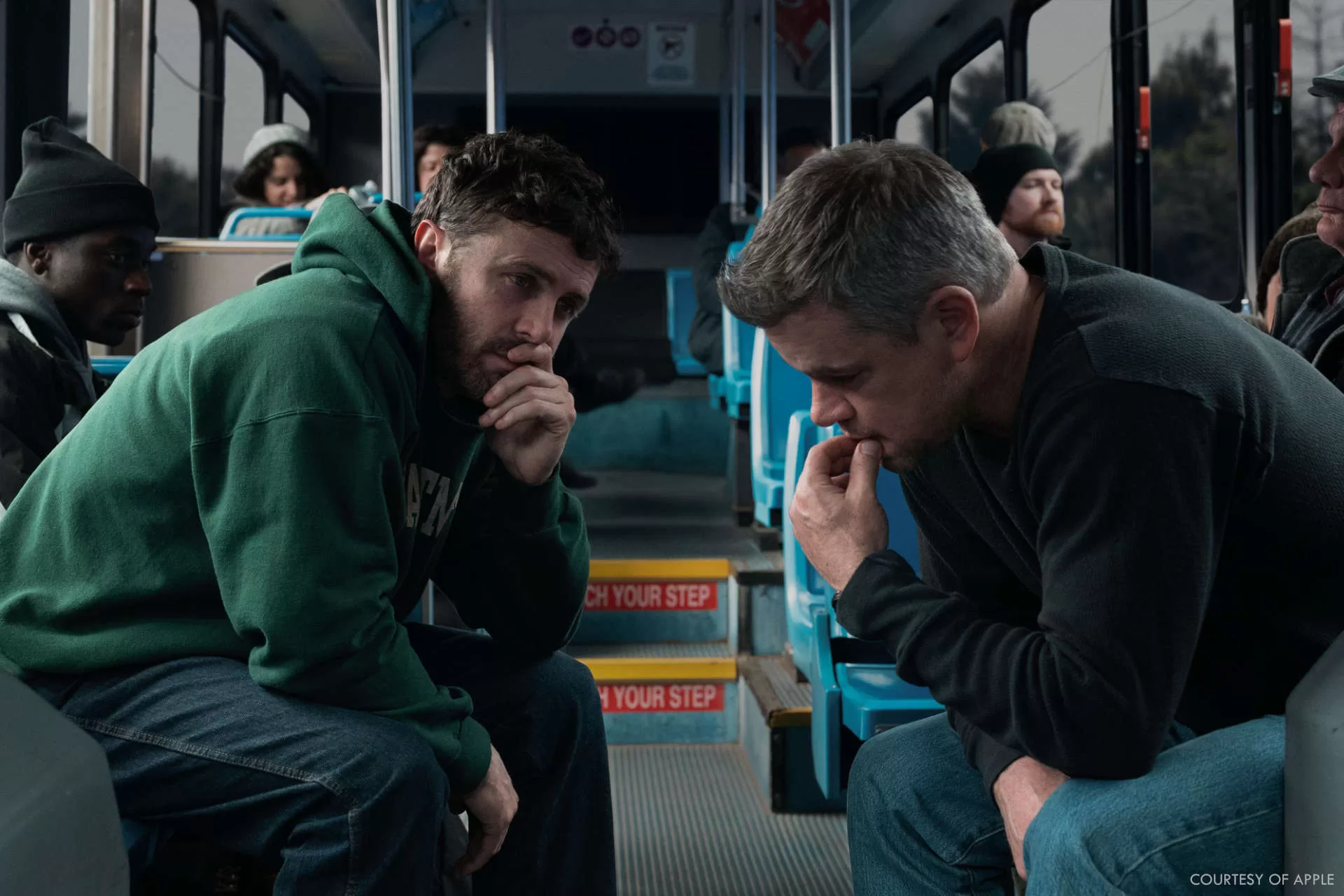
How did you achieve the balance between spectacle and subtlety in the visual effects to maintain the film’s realistic tone?
You tell me. One of the great things about Doug is that he’s not precious with any of the shots or scenes in the film. For him it’s always about what tells the best story. The VFX are not meant to stand out in this film. There are a few moments where we do things that were not possible without VFX, but I hope that the audience doesn’t focus on that.
Can you share any behind-the-scenes stories or anecdotes about the visual effects production?
After we finished principle photography, I was asked to help out a bit on Doug’s other film Road House. It gave me some great insight into how things were going to go in post. He has a tendency to recreate things in post to better fit the film. I really enjoyed being able to build a rapport with Doug so that when we got to The Instigators, I could better contribute to his process and help him create the film.
Were there any memorable moments or scenes from the series that you found particularly rewarding or challenging to work on from a visual effects standpoint?
One of the things that I enjoyed most about working on this project was the fluid nature of the process. I really went in knowing that it was going to be fast and somewhat chaotic. As such, we attempted to prepare ourselves for anything that might come up during the shoot or in post. It was a really exercise in “what if”.
Looking back on the project, what aspects of the visual effects are you most proud of?
I’m most proud of how much we were able to do with very limited resources. We had a few really fun and exciting sequences, and we were really able to assist the production in a number of big ways. The shooting schedule for the film was only 35 days, so there wasn’t a lot of time to do much of anything. I’m really proud of what we were able to do in that time with such limited resources.
How long have you worked on this film?
From start to finish the film was about a year for me. It should have been shorter, but we were a little delayed in post due to the SAG strikes over the summer of 2023.
What’s the VFX shots count?
We had about 650 shots in total.
What is your next project?
I am currently in post-production on The Bride (of Frankenstein) with director Maggie Gyllenhaal. The film is scheduled to be released on September 25th, 2025.
A big thanks for your time.
WANT TO KNOW MORE?
The Mill: Dedicated page about The Instigators on The Mill website.
© Vincent Frei – The Art of VFX – 2024




